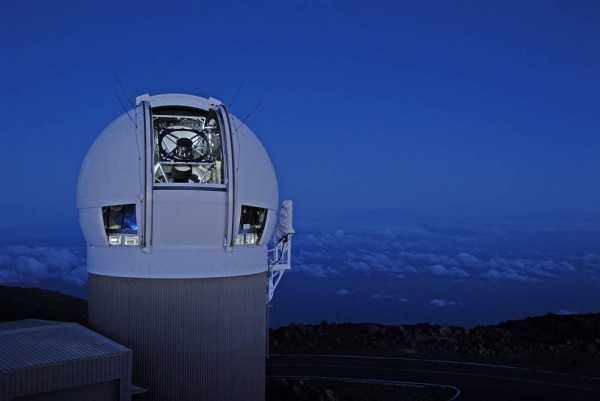By Ana Verayo, | January 11, 2016

The Panoramic Survey Telescope & Rapid Response System (Pan-STARRS) 1 telescope on Maui's Mount Haleakala, Hawaii has produced the most near-Earth object discoveries of the NASA-funded NEO surveys in 2015.
NASA just announced last week that they created a new office that will detect and monitor dangerous, near-Earth objects or NEOs. The space agency believes that the Planetary Defense Coordination Office that will be under NASA's Planetary Science Division, can help to issue warnings for potentially deadly impacts, from close approaches of space debris particularly asteroids.
Like Us on Facebook
Apart from this new office, NASA also has several projects involving early detections of NEOs. This includes the Near Earth Object Program under NASA's Jet Propulsion Laboratory, where this program provides an updated list of potential threats to the planet that will be based on an automated Sentry impact monitoring system.
In order to track these dangerous NEOs hurtling past the planet, a network of radio telescopes and along with the NEOWISE infrared red space telescope will coordinate together and bring about crucial data as the Planetary Defense Coordination Office manages all efforts of NASA in NEO detection.
According to Lindley Johnson who is a new Planetary Defense Officer, this formal establishment of the Planetary Defense Coordination Office is evidence that NASA is fully committed to lead national and international efforts in the detection of these natural impact hazards and to engage in planning planetary defense when needed.
If there will come a time that an actual asteroid is in the trajectory to hit Earth, the Planetary Defense Coordination Office will coordinate all efforts with the Federal Emergency Management Agency, in order to prepare an immediate response.
When an asteroid or comet is detected by NASA nearing Earth, its orbit will be mapped and predicted, as any potential threat will be closely monitored over time.
NASA reveals that 90 percent of massive NEOs measuring about one kilometer have all been detected where mid-sized NEOs, measuring some 140 meters or more, still remain a problem for the space agency, as only 25 percent has been discovered, where the U.S. Congress now demands that 90 percent should be discovered by 2020.
According to associate administrator for NASA's Science Mission Directorate, John Grunsfeld, tracking and defending the planet from asteroids is something NASA and its partners take very seriously hence, this new NASA office.
-
Use of Coronavirus Pandemic Drones Raises Privacy Concerns: Drones Spread Fear, Local Officials Say

-
Coronavirus Hampers The Delivery Of Lockheed Martin F-35 Stealth Fighters For 2020

-
Instagram Speeds Up Plans to Add Account Memorialization Feature Due to COVID-19 Deaths

-
NASA: Perseverance Plans to Bring 'Mars Rock' to Earth in 2031

-
600 Dead And 3,000 In The Hospital as Iranians Believed Drinking High-Concentrations of Alcohol Can Cure The Coronavirus

-
600 Dead And 3,000 In The Hospital as Iranians Believed Drinking High-Concentrations of Alcohol Can Cure The Coronavirus

-
COVID-19: Doctors, Nurses Use Virtual Reality to Learn New Skills in Treating Coronavirus Patients







